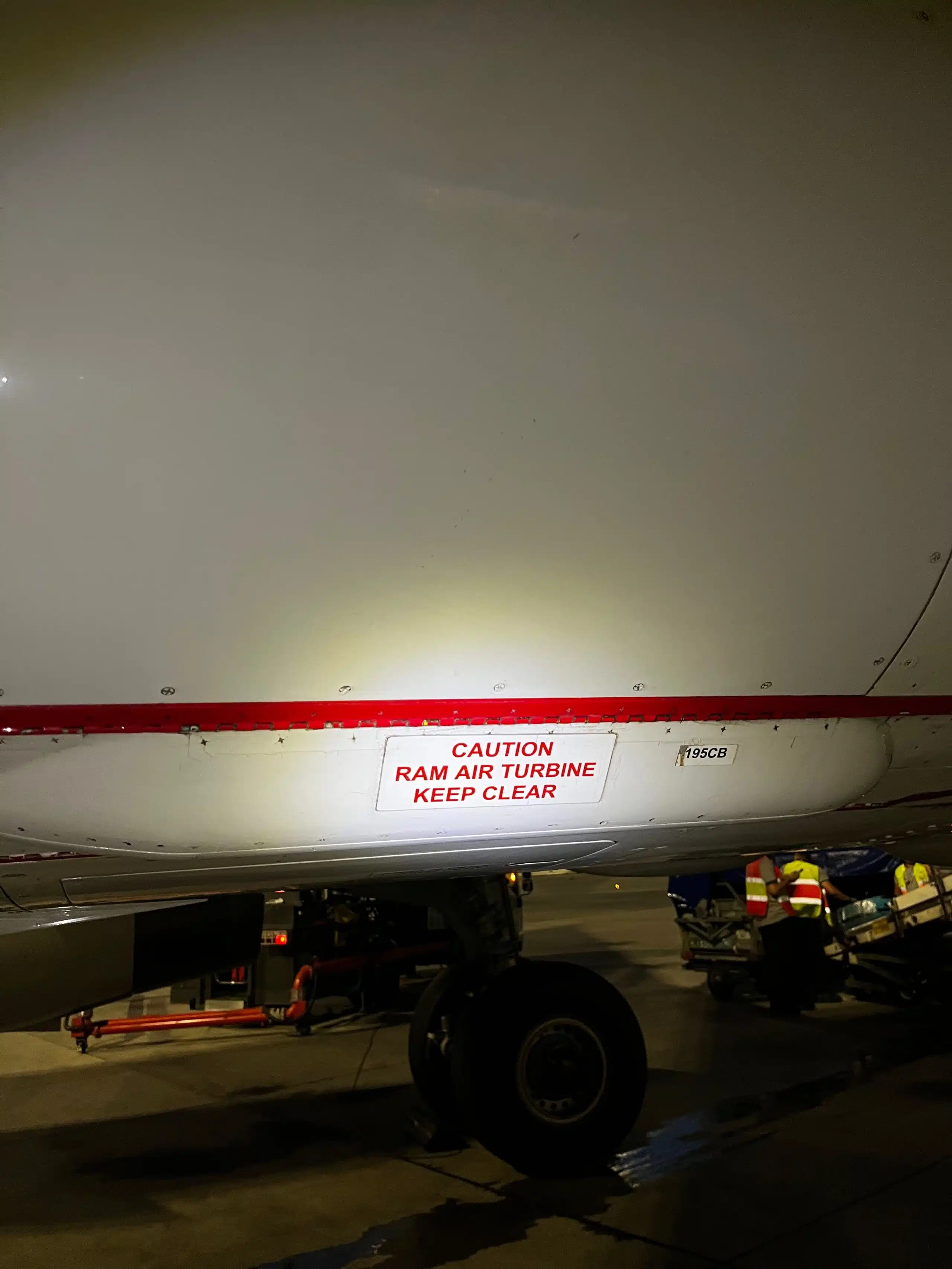Introduction
Imagine you’re cruising at 35,000 feet when suddenly both engines flame out. It sounds like a pilot’s worst nightmare, but even in this scenario, Airbus aircraft like the A320 have a powerful ally: the Ram Air Turbine, or RAT. This compact yet mighty component plays a critical role in keeping essential systems alive when everything else fails.
In this post, we’ll demystify the RAT — what it does, how it works, and why it’s one of the most important backup systems onboard the Airbus A320. If you’re a student pilot, aviation enthusiast, or a curious passenger, you’ll walk away understanding exactly how this little turbine earns its heroic reputation.
What Is a Ram Air Turbine (RAT)?
The Ram Air Turbine (RAT) is a small, foldable windmill-like device that deploys into the airstream to generate electrical or hydraulic power in the event of a complete power loss. Think of it as the aircraft’s emergency dynamo — it converts kinetic energy from the rushing air into life-saving utility.
RATs are found on various types of commercial and military aircraft, and while the design may differ, their mission remains the same: to keep critical flight systems operational when primary systems fail.
How Does the RAT Work?
When the aircraft loses both main AC power sources — typically due to dual engine failure or simultaneous generator loss — the RAT automatically deploys from the fuselage. Once exposed to the airflow, it begins spinning and powers a hydraulic pump and/or an emergency generator depending on aircraft type.
On the Airbus A320, the RAT is directly connected to the blue hydraulics. This, in turn, powers the emergency generator which supplies electricity to essential busses, keeping the aircraft’s flight control systems, basic avionics, and instrumentation running.
The Ram Air Turbine on the Airbus A320
On the A320 family aircraft, the RAT is a critical part of the emergency electrical generation system. It is designed to automatically deploy when AC BUS 1 and AC BUS 2 are lost, which would indicate a serious electrical failure or loss of all engines. Manual deployment is also possible via the overhead HYD panel.
Once deployed, the RAT drives a hydraulic pump which supplies pressure to the blue hydraulic system. This in turn powers the emergency generator, which energizes the AC and DC essential buses. These buses feed critical systems such as the flight control computers, EFIS, radios, and ECAM displays.
Benefits and Limitations of the RAT
The most significant benefit of the RAT is that it allows continued operation of crucial systems even when both engines and APU have failed. This gives the crew the ability to maintain control of the aircraft and communicate with ATC while executing a forced landing or ditching.

However, the RAT has its limitations. It can only provide a limited amount of hydraulic pressure and electrical power, and it requires a minimum airspeed — typically above 100 knots — to function effectively. Below that, RAT output drops off, and the aircraft may rely solely on batteries for power, with load shedding of non-essential systems.
Real-World RAT Deployments
Perhaps the most well-known use of the RAT was during US Airways Flight 1549, known as the “Miracle on the Hudson.” After both engines failed due to a bird strike shortly after takeoff, the RAT deployed automatically, providing power to flight controls and instrumentation as Captain Chesley “Sully” Sullenberger glided the A320 to a successful ditching in the Hudson River.
Other incidents, such as Air Transat Flight 236 and Air Canada Flight 143 (the “Gimli Glider”), also highlighted the RAT’s value. While not exclusive to Airbus, these events show just how vital this system is when the unthinkable happens.
Testing and Maintenance of the RAT
The RAT is a rarely used component, but it must always be ready. Airlines perform ground checks to ensure the system will deploy when commanded and provide sufficient hydraulic pressure and electrical output. It’s also verified during specific simulator training scenarios for flight crews.
Once deployed in flight, the RAT cannot be stowed again until the aircraft is on the ground. Maintenance procedures ensure it’s properly locked and verified post-landing after any in-flight use.
Conclusion: Why Every Pilot Should Understand RAT Systems
The Ram Air Turbine may not be the flashiest piece of aircraft tech, but when disaster strikes, it’s the reason an Airbus A320 can still be guided safely to the ground. Understanding how the RAT works and its limitations helps pilots better prepare for emergency scenarios.

The A320 ram air turbine (RAT) plays a crucial role in maintaining flight-critical instrumentation during power loss and RAT deployment. In the event of a complete loss of electrical power, the RAT generates power from the airstream, ensuring that essential systems remain operational. Installed in an aircraft’s aft compartment, the RAT can automatically deploy to provide auxiliary power, supplying electrical power to vital systems and supporting the aircraft’s operation even when the main engines are compromised.
Whether you’re learning to fly or simply curious about how modern aircraft stay resilient in extreme situations, the RAT serves as a perfect example of aviation engineering built with safety and redundancy in mind.
Frequently Asked Questions about the Ram Air Turbine (RAT)
What is the purpose of a Ram Air Turbine on the Airbus A320?
The RAT provides emergency hydraulic and electrical power if the main generators and engines fail. It helps keep the aircraft controllable and maintains essential instruments and systems.
When does the RAT deploy on an A320?
The RAT automatically deploys if both AC BUS 1 and 2 are lost, typically after a dual engine failure. It can also be deployed manually by the flight crew.
How effective is the RAT at low airspeeds?
The RAT requires a minimum speed (usually around 100 knots) to function properly. Below this speed, its output decreases, and battery power may be required for essential systems.
Can the RAT be retracted during flight?
No, once deployed, the RAT stays extended for the remainder of the flight and can only be reset by maintenance on the ground.
Has the RAT ever saved an aircraft in real life?
Yes. The most famous case is US Airways Flight 1549, where the RAT helped power essential systems after a dual engine failure, allowing a successful ditching in the Hudson River.
